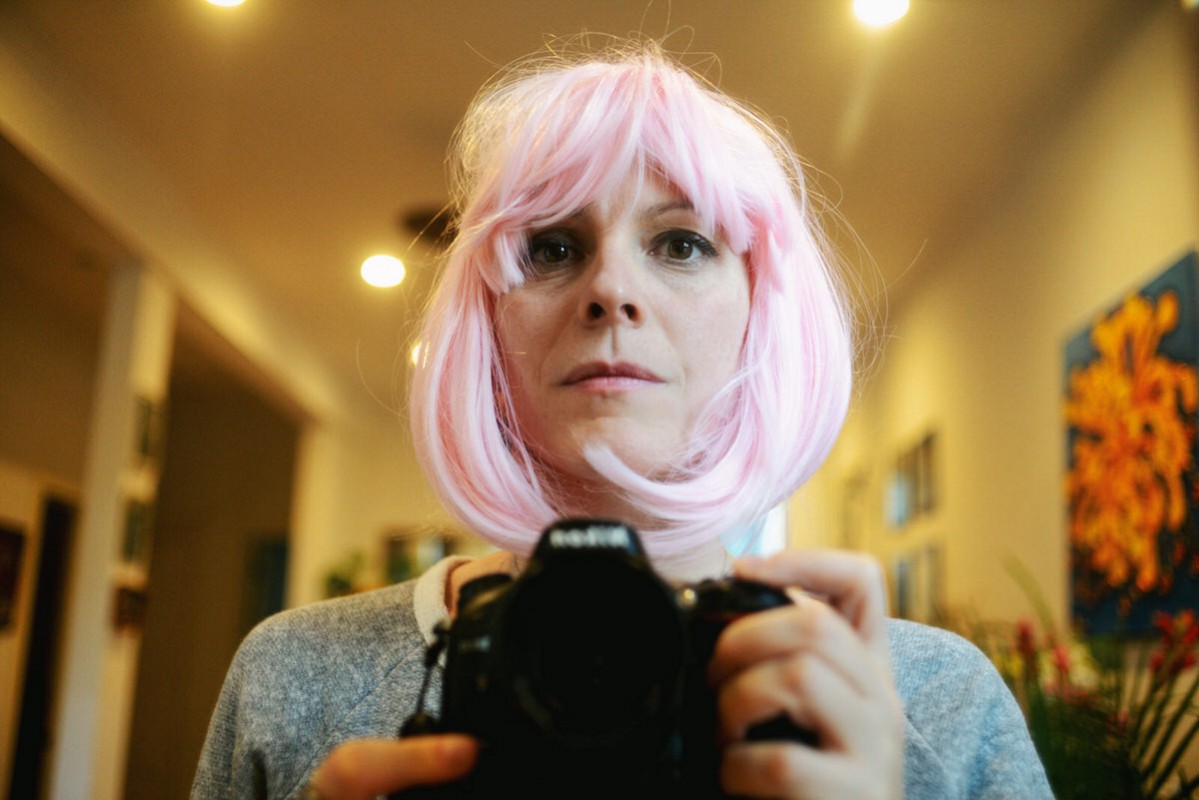
©Anna and Jordan Rathkopf
Interview by Polly Gaillard
APA New York photo/video team Anna and Jordan Rathkopf have recently received national attention for a project they never dreamed of making. Her2 is the story of Anna’s battle with breast cancer told from the unlikely perspective of Anna (the patient) and Jordan (the caregiver). Just thirty-seven at the time of diagnosis, Anna began making self-portraits about her struggle through treatment as Jordan captured images as the caregiver while co-parenting their young son. The photos, poignant and honest about the struggles each spouse endured, play together in a cohesive body of work that will encourage and enlighten those with a similar battle. In addition to winning a 2021 APA Award, the husband-and-wife team was recently featured on Good Morning America and in Memorial Sloan Kettering and Susan G. Komen Foundation campaigns. APA is honored to share Her2: Our Personal Breast Cancer Experience.
Did you begin making the images before you knew this would be an intimate story about Anna's breast cancer?
Anna: We started the day after we heard the word "cancer." It felt like a compulsion, something we had to do.
Jordan: Usually, we document fun things we do as a family, like vacations or birthdays. But never something so vulnerable and upsetting.
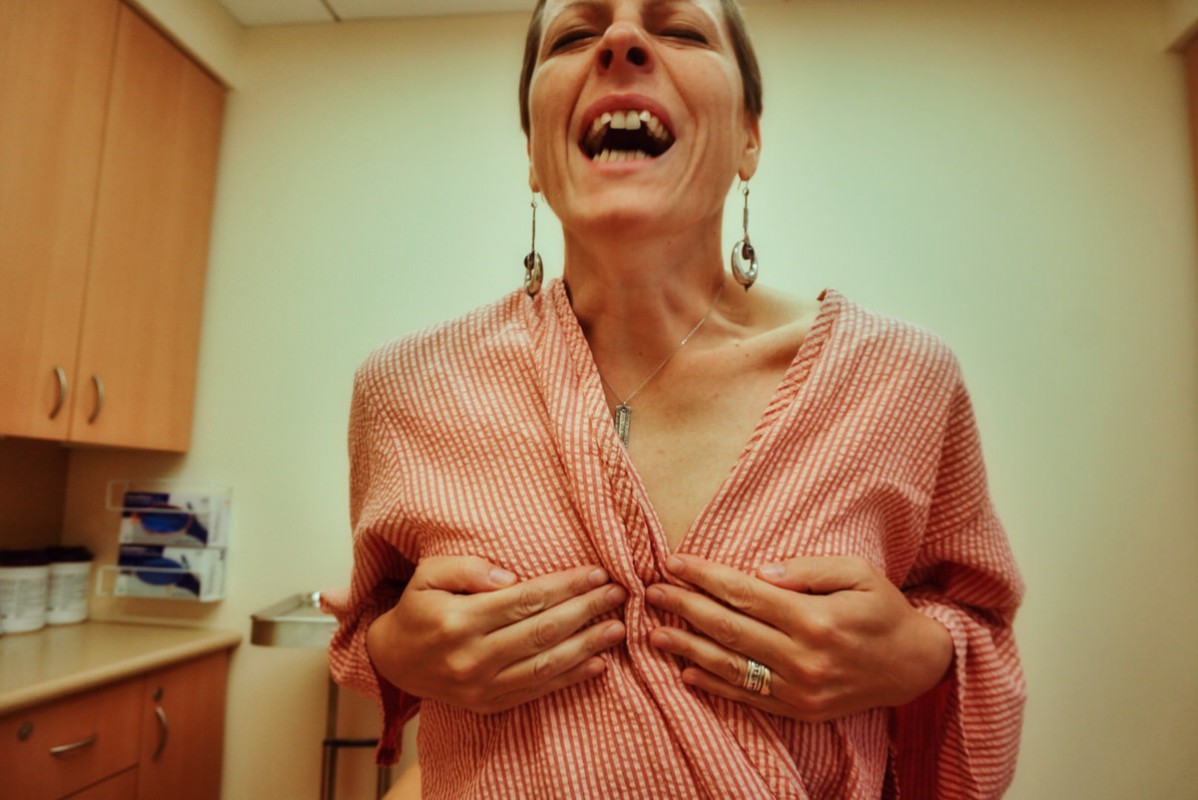
©Anna and Jordan Rathkopf
Did you consciously decide to incorporate each of your personal views, or did it happen organically?
Anna: I wanted to understand what was happening inside of me. It was such a shock. Two years prior I gave birth, my body created life, and suddenly, the same body was trying to kill me, literally. I didn't know how to grasp this situation, to understand what was happening inside of me. Taking photos was a way to connect myself, the pieces of me.
Jordan: I wanted to show my experience as a husband and father because I couldn't find a cancer story that felt like my experience. I wanted to show how it felt for us as a family living through it while I was struggling with anxiety and depression as her partner and caregiver. I felt pressure to project strength and be a "rock" for my family while I had panic attacks privately. The photos I took turned into a conversation where I could be vulnerable and admit fear in ways I couldn't normally. I wanted to find other men to talk to, but I couldn't.
Was there a decision that the images should appear technically cohesive to create one story from two points of view?
Anna: It felt like we were creating two stories on the same subject, on us and our way to get through the most challenging part of our lives. But we did not make a decision to work in any specific way to make it feel cohesive.
Jordan: Anna didn't show me most of her photos until the year after treatment. When we shared all of the work that year, it became evident that our two different experiences came together primarily because of our shared life. But in some ways, the photos make me realize we also felt more alone together emotionally than we realized.

©Anna and Jordan Rathkopf
Anna, did you feel more vulnerable when Jordan captured your image or when you made a self-portrait?
Anna: I definitively felt more vulnerable when Jordan pointed the camera at me. When I was taking my own self-portraits, it made my mind go a different way. My brain went creative, and instead of thinking of my situation, I started to think about angles and light.
Jordan, how did you reconcile showing the horrors of Anna's illness and still capture tender images of your wife?
Jordan: I never did, really. I just felt like I had to capture everything, the good and the bad. Those horrible moments made my feelings of love and tenderness for Anna more deeply felt. It was a wake-up call for me how much they meant to me and how quickly everything can change in one moment. That feeling compelled me to capture the ups and downs because all of it felt so raw and intense.
Anna, what did the photographs provide for you emotionally as you struggled through your treatments?
Anna: The process of taking photos was helping me to take my mind away from what was happening. I felt that just the process of putting the camera inside my bag before going to the different doctors' appointments was giving me some kind of purpose, feeling "I am not just going to have treatment. I am going to do something, to create something." I found it very helpful. And looking backward to the photos I took of myself helps me now to piece myself together. I am still the same person even though there is still a strong feeling of "before and after."
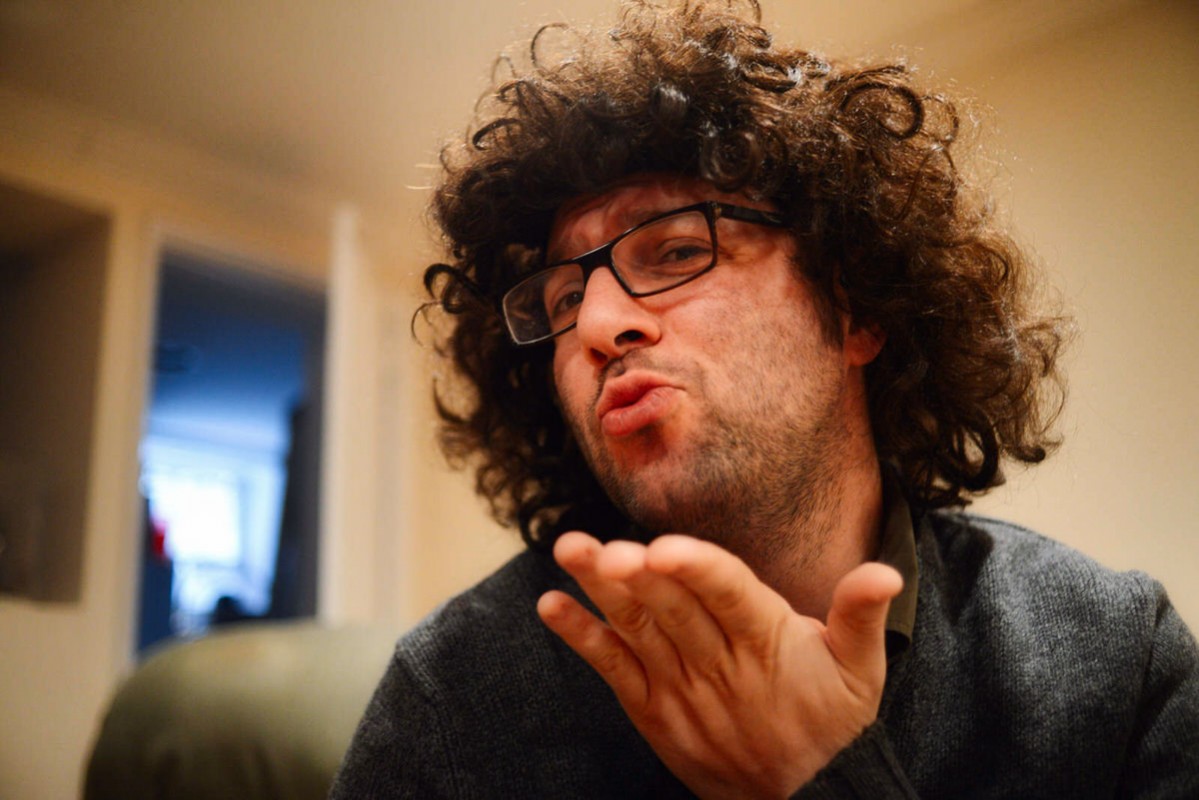
©Anna and Jordan Rathkopf
Jordan, did the work give you any emotional distance that helped you deal with the reality of your wife's breast cancer?
Jordan: Sometimes it did. Like being in the room for her first chemo treatment, I took hundreds of pictures. The nurse couldn't believe it, it must have seemed really crazy to have the husband obsessively taking photos during her first chemo. I was just so scared, I didn't know what else to do. Sit there and worry that she will have a bad reaction to the chemo for the first time? The camera helped me escape.
At the same time, the work allowed me to become more intimate with my feelings. I could look at those photos in private and process what was happening to us.
How did the Susan G Komen Foundation and Memorial Sloan Kettering become involved with Her2?
Anna: Memorial Sloan Kettering was the hospital I was treated at, so when we shared some of our images with them, they wanted to share with their audience how photography was used as a form of therapy.
Jordan: Susan G. Komen Foundation found our project during the early days of COVID19. Their creative director reached out to say how much the project resonated with them and to see if we would be interested in working with them for their 2020 Master Brand Campaign "Moments." After that campaign last year, they commissioned us to work with Se'Nita Harris, a 37-year-old African-American woman in N.Y.C. This work is featured in their 2021 "Moments" campaign and also for a health and race equity initiative called "Stand for H.E.R."
Did the project evolve differently than you anticipated? Did you ever feel that emotionally it was too draining to continue?
Jordan: I definitely felt emotionally drained from working on it. Especially the editing! It was one thing to take the pictures, another to have to look at them "objectively." And then having to share them with editors and others was another level of emotional drain.
The biggest surprise for us is how it is evolving now. We thought we reached a pause moment with the project 5 years out, but then Anna's mom had a stroke and was diagnosed with cancer this summer. So the project, unfortunately, seems to have a new dimension as Anna and her mom switch cancer caregiving roles.
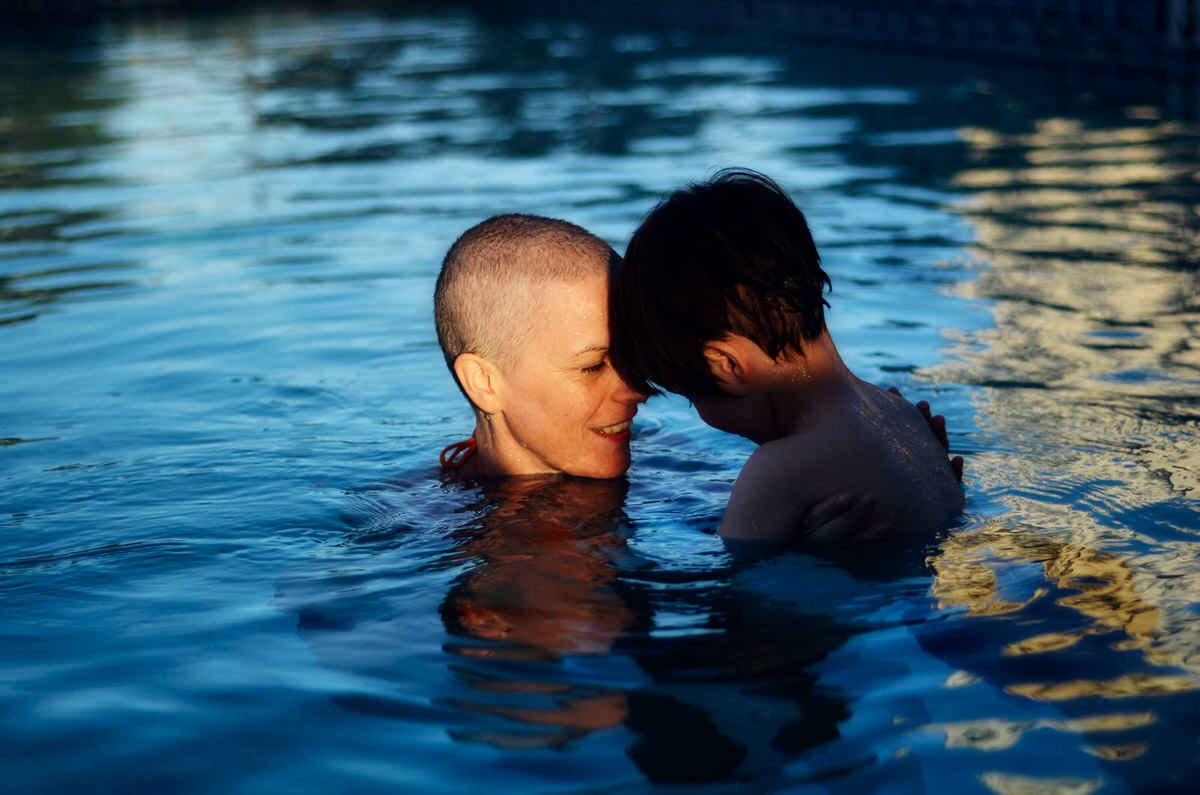
©Anna and Jordan Rathkopf
Anna, now that you have gone through the cancer treatment, are the pictures difficult to look at, given they are maybe something you'd like to forget?
Anna: It is interesting how the mind works. I sometimes feel like I remember the treatment through the images, and it almost feels like a movie. At the same time, it helped us to open up conversations between ourselves. Once we started actively going through the images, it opened a way to talk to each other more deeply, asking what we felt at the time. Seeing the images I took of Jordan, I started to understand more what he was going through and the impact on my family. I found our conversations so healing because they allowed us to be really honest. Since the photography is so raw and real, we felt we had to be honest with ourselves.
Jordan, now that you've witnessed Anna's sickness, are the pictures difficult to look at, given they are maybe something you'd like to forget?
Jordan: This is an experience I wish we could forget, but we never will, even if the pain lessens over time. It hurts looking at many of these images, but it also reminds me of what we went through and the importance of not forgetting. I feel trauma from it all, but sometimes, It helps me deal with the trauma to face it rather than push it away.
How do you want this story to benefit others going through breast cancer?
Anna: I want these photographs to help people open up conversation and be more compassionate. I want them to feel like this could be their neighbor, friend, or just a random person on the street.
Jordan: We want others going through it to feel less alone. Especially people under 40, when most people our age are not thinking about their mortality. And for me, I hope it helps other caregivers feel safe to admit the pain and frustration they may be experiencing.
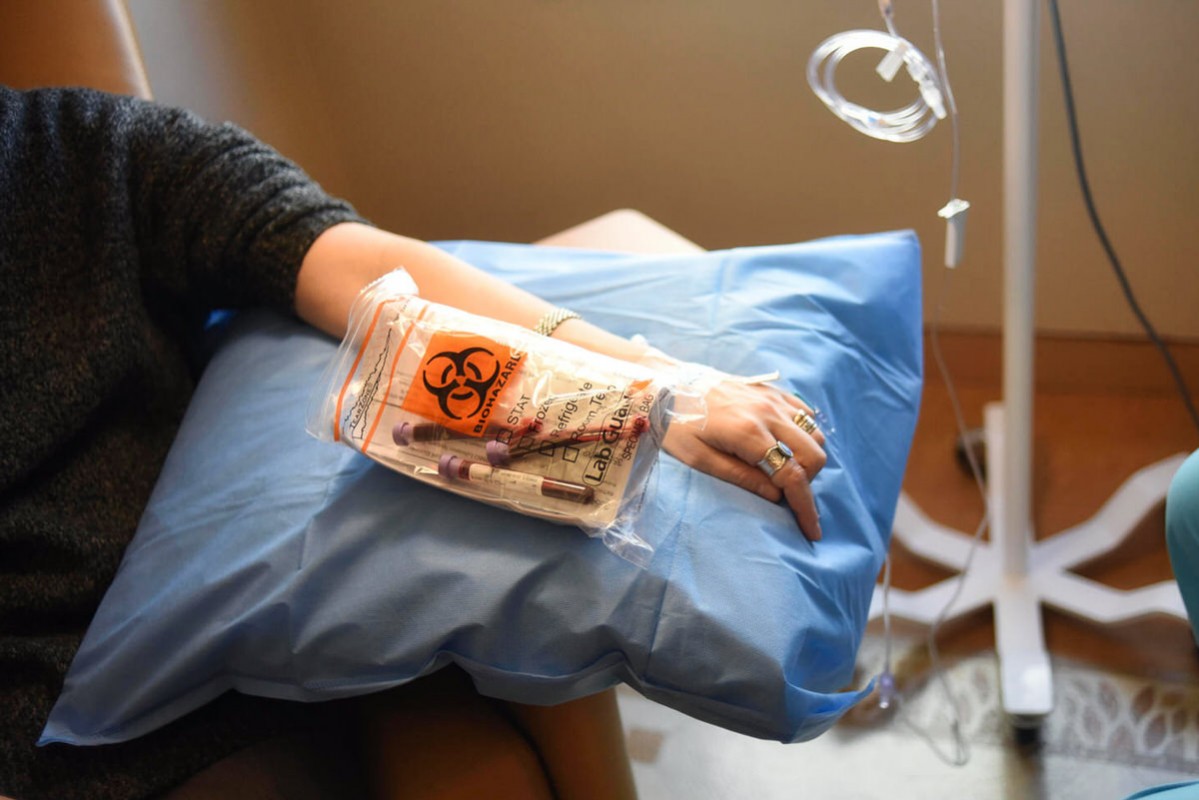
©Anna and Jordan Rathkopf
How did your son feel about being included in the project?
Anna: He was only two and a half, three years old when the project was in full swing, and he didn't care much, to be honest. We were trying to protect him from the worst of it since he was so small. He saw some of the images but nothing too major. We know we will have to talk about it soon, but he already knows that I was sick since we were never hiding it.
Jordan: He has seen some of the images in online ads or print, and he says, "look, we're famous." So I think he likes it now. I wonder about this often, say when he is 12, what it will feel like to see these images and realize what was happening? Nowadays, we actually try to include him in projects, so he is getting used to it :)
Where do you see "Her2" in the world? A book, an exhibit?
Anna: We would love both. We are in the early stages of creating a book, and we would love to have an exhibit.
Jordan: One reason we feel it is essential to share our story is that it has the dual perspectives of the caregiver and the patient, happening simultaneously, which opens the conversation to a broader community. Especially now that the world has experienced the pandemic, sadly, more people than ever have experienced health problems, loss, and trauma.
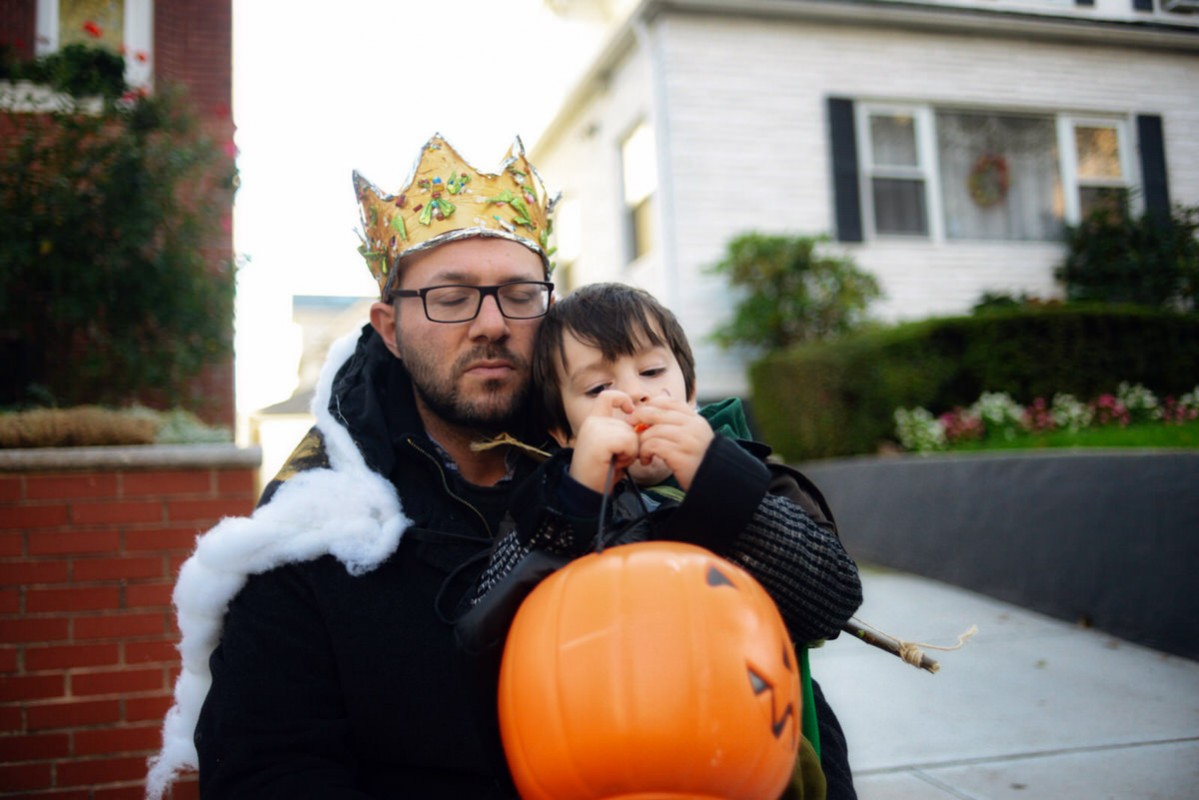
©Anna and Jordan Rathkopf
Is there one photograph for each of you that is the seminal image of Her2?
Anna: I love the image I took of Jordan and Jesse during Halloween, there is so much love and tranquility in Jordan's closed eyes, and I love that Jesse just doesn't care and is looking at whatever he has in his hand.
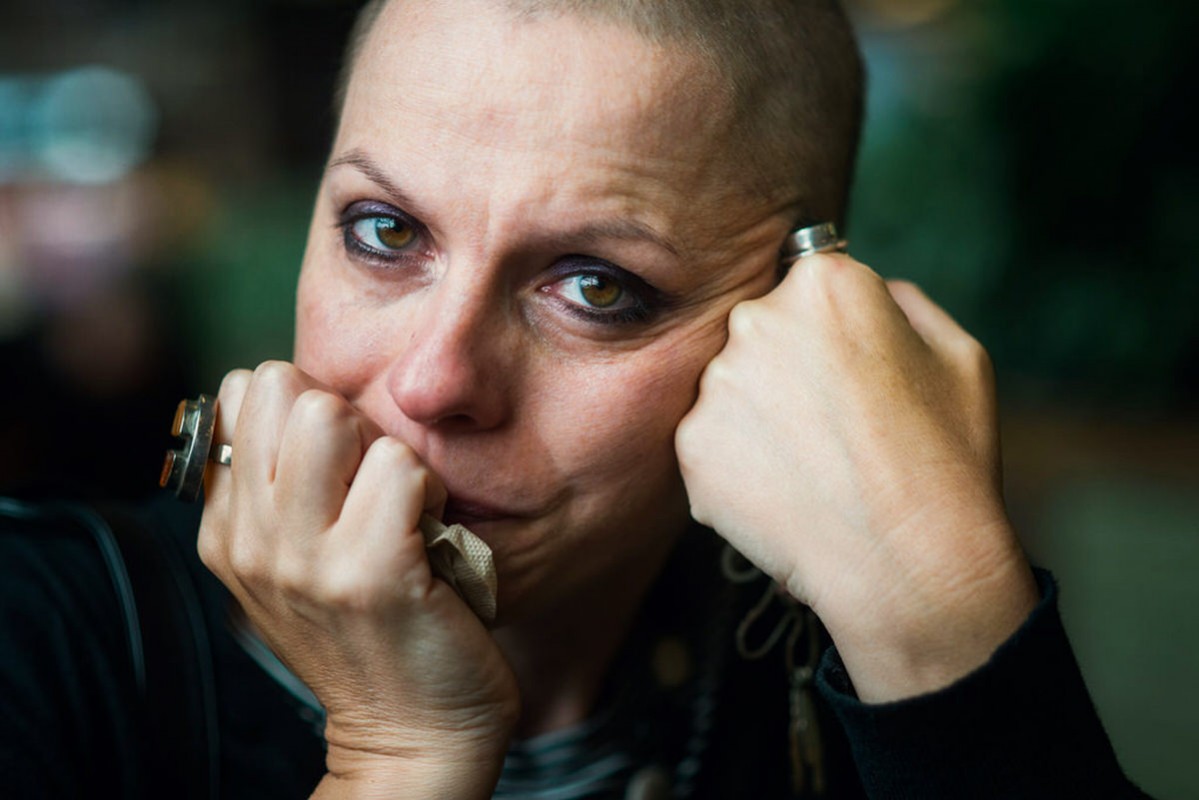
©Anna and Jordan Rathkopf
Jordan: For me, the image of Anna with her head resting on her hand staring straight at me. I took that in a moment when she literally fell apart. In this image, I see her pain, but I mostly see her strength and courage. Her determination and her fight. It sounds cliché, but that is what I will remember most from this experience. How much she inspired me with her inner beauty and strength.
Anna and Jordan Rathkopf's website
rathkopfphotography

